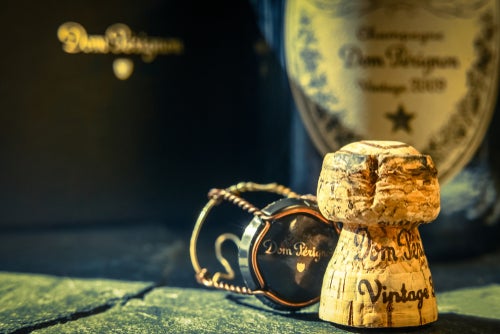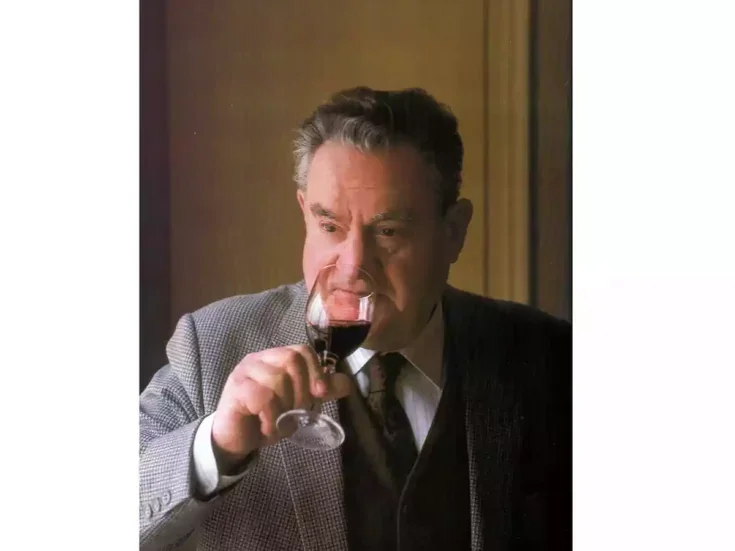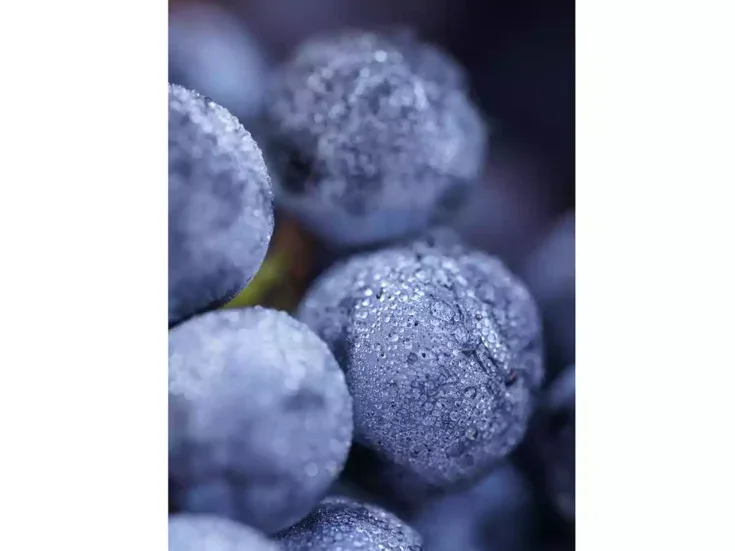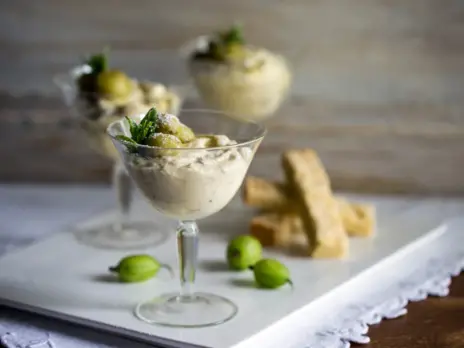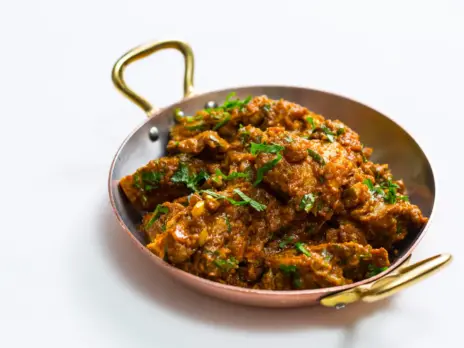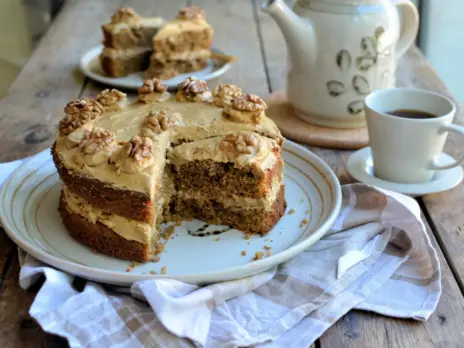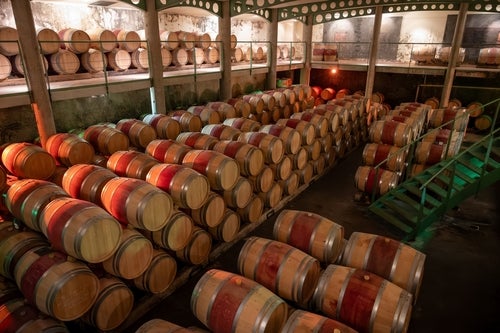
Varieties may come, and varieties may go, but blending remains the key to Bordeaux. The wines of the Médoc in 1855 had a completely different composition from those of today, but the key to quality—then as now—was getting the best blend for the year. Before the AOC was invented, the blend as often as not might include grape varieties from the Rhône, as well as from Bordeaux. Before it became possible to age wine prior to bottling, the blend was of course made shortly after the harvest; today, there is the option to blend at any point during the period of aging.
Opinions used to differ on what would be the appropriate time to blend in order to get the best result. Some people believe that the sooner the varieties are blended, the better they marry together, and the better the final wine. The earliest practical moment is after malolactic fermentation is finished. Others hold the contrary position: that you are in a better position to judge the quality of each lot if you keep the individual varieties separate until the last moment. As a practical matter, the increasing importance of showing the wines en primeur has forced earlier blending; now most châteaux blend before the en primeur tastings in April. (Some make a “representative” blend, reserving the option to change it later.)
Some years ago, when I was writing Claret & Cabs and was especially interested in the effects of other varieties on the blend with Cabernet Sauvignon, I had a most interesting tasting at Léoville-Las-Cases. The grand vin comes from a single block of 55ha (136 acres), entered by the famous gate topped by its fierce lion. It has a variety of soils, and it runs down a gentle slope to within about 1,000ft (300m) of the river. The grand enclosure is planted with Cabernet Sauvignon, Cabernet Franc, and Merlot; there is no Petit Verdot. The final blend of the 1999 vintage was 62% Cabernet Sauvignon, 18% Cabernet Franc, and 18% Merlot. More than a decade later, we tasted samples of the individual varieties, which had been bottled separately.
The Merlot showed surprisingly fresh fruits, with a mineral impression and faint touch of tertiary development, overall distinctly softer than the other two individual varieties. The Cabernet Franc was all fresh black fruits, more refined and precise, than the other two varieties, with taut edges. The Cabernet Sauvignon gave the most complete impression of any of the single varieties, showing as black fruits with a herbal edge and a touch of herbaceousness only on the aftertaste. It was the most closely related to the grand vin (not surprising, since it’s the dominant component).
This was all very interesting, but the revelation came in comparing the grand vin with blends freshly made from the individual varieties. The Léoville-Las-Cases showed more development than the varietal wines; but there was no doubt that the blend was more complex than any of the components. After this tasting, we tried new blends made from the individual varieties. Blends with 10% more of either Cabernet seemed credible alternatives to the grand vin. A blend with 10% Merlot seemed to lose the typicity of St-Julien. Further experiments suggested that a blend with 5% extra of each Cabernet showed the greatest finesse of all. So, what seems to be the optimum blend may change depending on the point at which the blend is made.
The counterargument is that the wine develops more complexity if its components are allowed to marry together as soon as possible. (Indeed, you might take intermingling varieties in the vineyard to provide an even more extreme example of this approach. Michel Deiss in Alsace argues that complanting varieties actually changes their development so that they tend to mature together.) Furthermore, if you take the view that it is better to blend early, then blending later would be akin to the (illegal) production of rosé by mixing red and white.
Late-blended NV grands vins?
So, might Bordeaux make better wine if the blending was done later? If the en primeur system did not exist, would most châteaux go back to blending two years later? Following the argument to a logical conclusion, since the top wines are rarely ready to drink upon release, why not keep wines under glass and blend even later to achieve a more perfect result? Château Latour left the en primeur system in 2012 and now releases its wines much later, when they are ready to start drinking; the 2017 was released in 2024. If it weren’t for the financial pressure of being locked into the en primeur system, other châteaux might follow—and there would be an opportunity to try later blending. Perhaps rereleases equivalent to Champagne’s late disgorgement would acquire similar prestige.
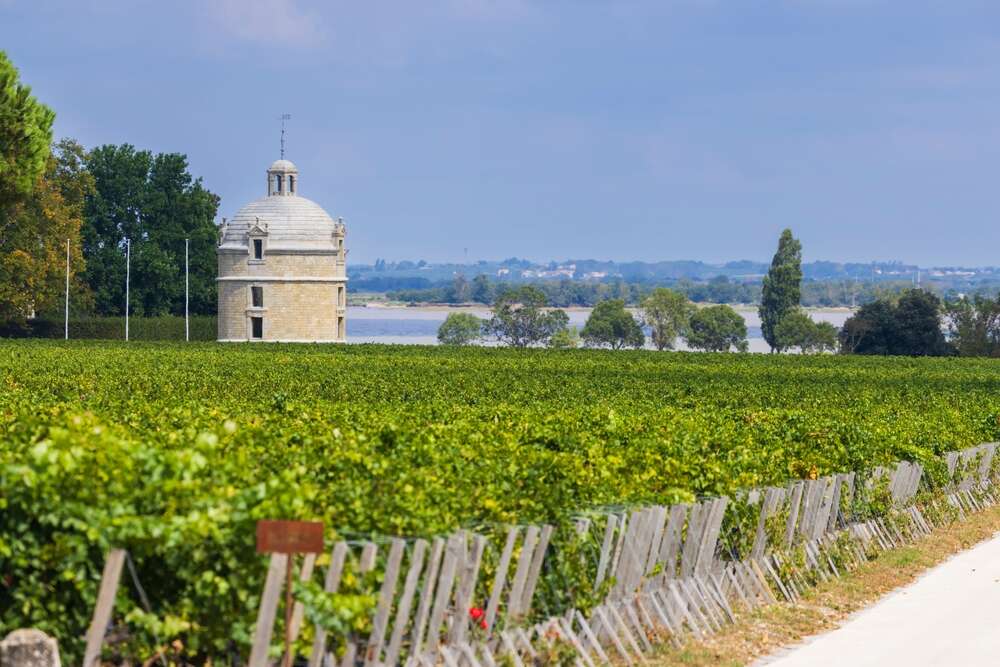
For Vintage cuvées of Champagne, late disgorgement offers an opportunity to see alternative routes of maturation. Reblending Bordeaux at, say, ten or 20 years after the vintage could offer an equivalent opportunity to re-optimize the vintage. (Late disgorgement doesn’t change the blend, of course, but often the dosage is reduced to rebalance the wine. Since sugar is not an issue in Bordeaux, the equivalent would be an adjustment of the blend.)
Champagne is probably the nec plus ultra example of blending to maintain consistency of style across vintages for Non-Vintage cuvées. Bordeaux has gone a different route, of course, in emphasizing vintage. It is legal in Bordeaux to add up to 15% of another vintage (although I have not yet encountered any château claiming to do this). The possibility offers the same dilemma as in Champagne: A poorer year could be greatly improved by adding 15% from a better year, but the consequence is to reduce the optimum of the better year. Considering the properties of a trio of years such as 2002, 2003, 2004, it is entirely possible, however, that better wines might have been made for each of those years by blending across vintages. Of course, there was no way to know that until later—which is where blending later would offer a possibility denied by blending for en primeur.
And given the wild swings in climatic conditions now caused by climate change, it is entirely possible that there may be more cases to come of successive years whose conditions are so opposed that blending would make a better wine for each year than sticking rigorously to vintage.
Without a doubt, there are some complications in postponing blending. The rise of second wines means that decisions must be made in time for their release, which is of course earlier than for the grand vins. Except for those instances where the second wine really is committed to a different set of vineyard plots, there is a yin and yang between the wish to make the best possible grand vin and the need to have a second wine of high quality. It is a limitation on having a completely free hand in blending that the lots have to be set aside for the second wine. Perhaps second wines should always represent the vintage exclusively, but grand vins should be optimized with regards to all parameters?
Open to all blending possibilities
Blending is always a compromise. Should that compromise be restricted to the choice of varieties before the en primeur tastings, or could better wine be made by allowing more time before the decision and consideration of other vintages also? In the era of the extremes of climate change, I would argue that we need to be open to all possibilities.
An en primeur system makes sense when wines are sold only on allocation and there is, anyway, no opportunity for consumers to taste before they make a decision on whether or not to buy. In that situation, the producer obviously benefits by taking in the cash flow as soon as possible; the consumer benefits by assuring the supply. This is true whether there is genuine scarcity because of small production, or managed scarcity, used as a marketing tool to unbalance supply from demand (as in Napa Valley, for example).
When production is on a larger scale, some artifice is required to induce consumers to make their decision before they can taste the wines. The Bordelais have been very good at this. Until the past decade, there was a distinct financial advantage for consumers in buying en primeur, because the prices went up significantly on release. This made the decision easy in good vintages but not so straightforward in poor vintages. That situation was dealt with by linking allocations in top vintages to the takeup of allocations in preceding poor vintages.
The en primeur system has now softened to the point at which the necessity and advantage of early purchase has been rather whittled away. Another factor is that the shift in style of Bordeaux—partly as the result of climate change, partly as the result of changed criteria for harvesting—has made the wines more approachable much sooner, and therefore easier to assess when young. When it was the case that young Bordeaux was difficult to appreciate, expert opinion was needed to assess a vintage in the early stages. It would have been only marginally easier to assess the wine in the first couple of years in the marketplace than in barrique. So, there was not much advantage in waiting for the wines to be released. (To be sure, collective expert opinion could still get things seriously wrong; there were “vintages of the century” in the 20th century that turned out to be nothing of the sort.) Now that it is easier to assess wines when they are released, there is more to be said for waiting to form your own judgment.
As things stand, the decision on blending in Bordeaux is closely linked to the need to present the wines en primeur almost as soon as they have started their aging in barriques. Blending is not the only feature of vinification that depends on the sales system—the fashion for performing malolactic fermentation in barrique is often attributed to the need to make the wines look charming at this point. (However, some châteaux have backed away from this and gone back to performing MLF in vat.) I suppose it would be naive to overemphasize the dependence of winemaking on sales, since the purpose of making wine, after all, is to sell it. But it’s an interesting question nonetheless: In an ideal (disconnected) world, what would make the best wine?

